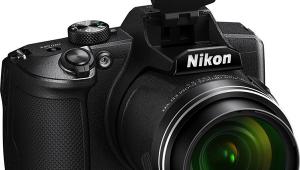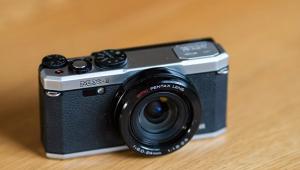Canon PowerShot G5X Compact Camera Review
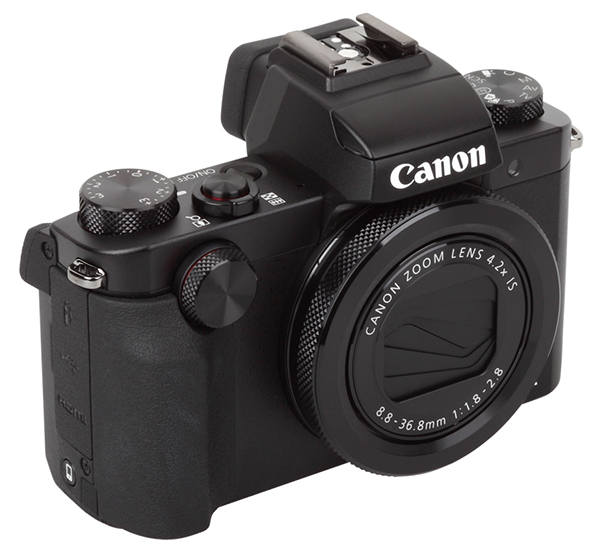
(Editor's Note: Lab Review lab tests and comments are supplied by BetterNet, Shutterbug’s TIPA-affiliated testing lab and edited by George Schaub. Shutterbug is the sole US representative within TIPA, a worldwide association of photo and imaging magazines.)
The new Canon PowerShot G5 X is based on the same sensor system as the Canon G7 X. It uses a 1-inch sensor (BSI technology) with 20MP and a professional 3:2 aspect ratio. Compared to the G7 X, the G5 X has a lot of new and additional features, including a high-resolution electronic viewfinder with 2.36 million RGB dots that is based on OLED technology. By default, the viewfinder offers a frame rate of 30 frames per second, being the most efficient power-saving mode. The photographer can change the frame rate to 60 f/s, which is very helpful when taking photos of fast moving objects. If scene elements include very fast action, such as sports photography, the frame rate can be boosted to up to 120 f/s. However, this cuts the vertical resolution of the viewfinder image by half.
The new electronic viewfinder – which is located on the top of the body – gives the G5 X an SLR-like look. In addition, the body front is newly designed and has a small bulge as a “grip” on the right hand side of the small camera. The setup dial on the front is operated by the forefinger of the right hand and makes parameter setup very easy and intuitive. The built-in flash has been moved to the top of the EVF bulge. There’s an accessory shoe for external compact flash systems or even studio systems via remote control flash adapters. Numerous function elements and buttons on the back allows for direct setup of many image parameters. Functions of the front and back dial (which is also a 4-way control field for menu navigation) and for the lens ring on the front can be defined in the menu. For example, the lens ring can be used as a focus ring or for choosing aperture. There is only one small drawback: when the camera is set to M mode the lens ring can only be set to aperture or shutter speed setting (and vice versa in combination with the dial on the front) and manual focusing is always handled by the control field/dial on the back.
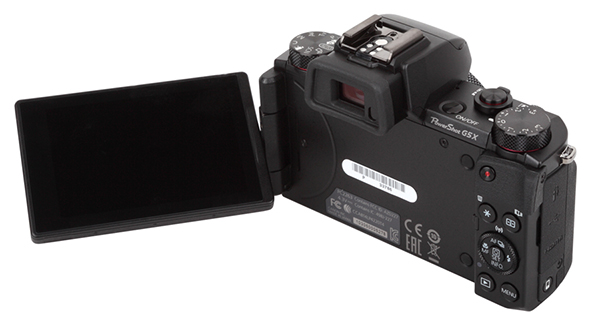

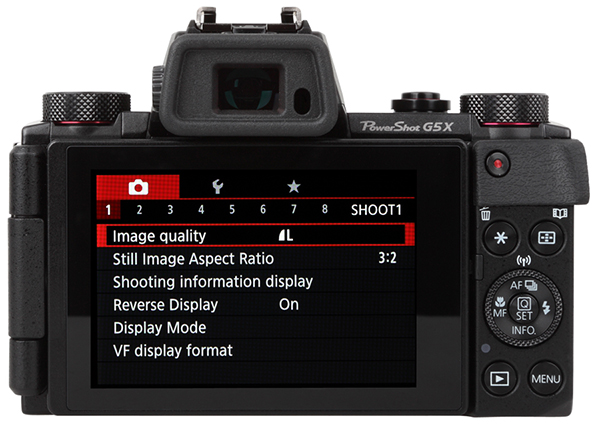
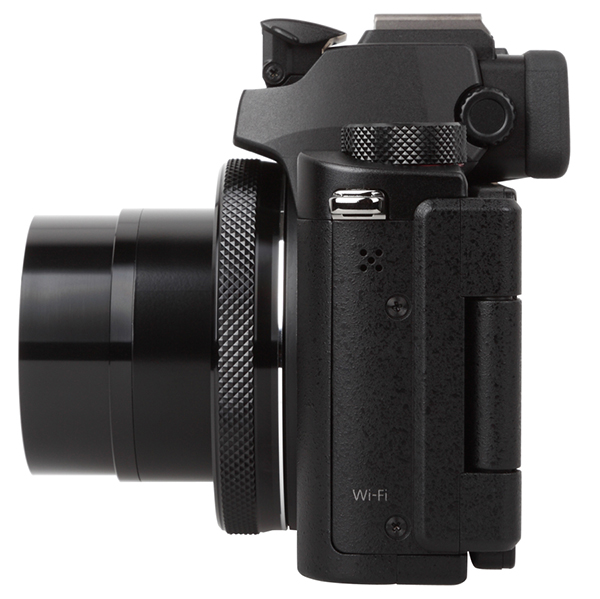
The camera has an integral 24-100mm lens (35mm film equivalent). It is a fast lens system (f/1.8 to f/2.8) which allows the user to take shots in ambient light situations and also to work with a shallow depth of field, even though the sensor is smaller than in APS-C cameras. To use high wide aperture settings in bright light conditions the camera offers a digital ND filter system with three modes: “Off”, “Auto” and “On.” Using this filter, the user can take images with the widest aperture available even on a sunny day.
Even though it doesn't offer a wide zoom ratio it has a built-in optical stabilizer system. In combination with Canon's “Dynamic IS” system it works as a 5-axis stabilizer and will help in many situations. In addition, it is very helpful when recording Full HD videos.
Along with its high-resolution viewfinder the camera offers a fully articulated swivel LCD on the back with 1,040,000 RGB dots. This LCD screen is touch sensitive and is used for menu setup or to define the desired focus area. When recharging the battery the Canon G5 X offers different systems. It is supplied with a standard recharger, but its battery can also be recharged via the USB port of the camera.
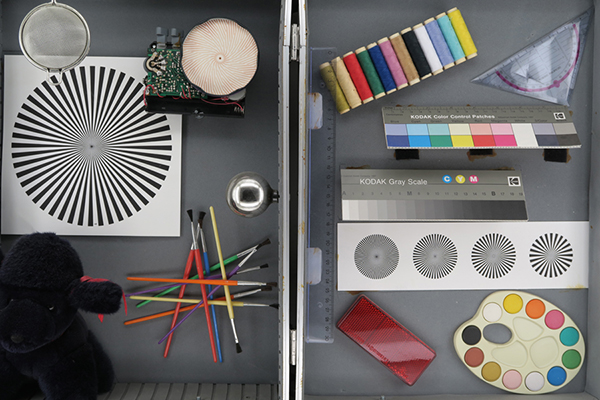
The lens system created a very sharp reproduction in the center of the image, but sharpness decreases towards the corners of the test picture.
Comments on Image Quality:
Color: Characteristically for a Canon compact camera, the G5 X reproduced the colors of the test chart with high saturation. Red colors are boosted by high yellow rates and darker blue color patterns are reproduced with high magenta rates, which causes a shift into the purple area of the color space. Skin tones are reproduced very nicely and match their given values nearly perfectly. Color differentiation is on a good level, but sometimes the high saturation creates an overflow of similar colored elements. The threads in the red and especially the yellow spool in the upper right of the standard test box show this effect.
Sharpness: The camera creates high resolution images, which are over-sharpened. The test chart was reproduced with 3566 of 3648 lines per picture height, but also showed very intense “overshot” effects in our test chart. This effect is based on the electronic sharpness filtering done by the image processor. On hard contrast lines we noticed corresponding double contours or halo effects. This over-sharpening is also noticeable in our live test images. The hair and eyelashes of our model, for example, are reproduced with very intense sharpness filtering which causes a somewhat artificial look.
Noise: Between ISO 125 and 1600 the camera showed an excellent performance in our noise tests. Luminance noise is on a little higher level than in images taken with APS-C or full frame sensor cameras, but is kept below 1.0 percent. The combination of noise effects and anti noise filtering done by the “DIGIC 6” processor (the same as in Canon's most modern SLR systems) becomes visible in images taken with ISO 1600 and higher. In images taken with ISO 6400 and 12,800 these effects reduce detail reproduction in a clearly noticeable way.

The dynamic range results are very good. At lower ISO speed settings the camera achieves a maximum of 11.1 f-stops, which is very high for a compact camera. It keeps a level of 10 to 11 f-stops up to ISO 6400, and only in the highest ISO settings the dynamic range drops drastically to 6.04 f-stops.
Video Format and Handling
The Canon G5 X is able to record Full HD video with 1920 x 1080 pixels. It offers high frame rates up to 50/60 progressive frames per second (PAL or NTSC mode), which helps to record fast moving objects. It also allows recording in standard frame rates like 25 or 30 fps. In addition, it offers video recording in 720p mode or in “iFrame” mode, which is a video format especially for some older Apple Mac systems. Videos are saved as MP4 files with H.264 compression. The test samples were taken in Full HD mode with 50 fps. These videos are recorded with 35 Mbit/s; the bit rate can't be defined by the user.
The camera has an additional record button on the back to start video recording and allows video recording even when taking still photos in P, Tv, Av or M mode, but switches back to AUTO mode for the video sequence. This button also has to be used when the mode dial on the left hand side of the camera is set to movie mode. When using the manual video mode, which is available in the LCD menu when the camera is set to movie recording by the mode dial, the user can change aperture, shutter speed and ISO speed manually. The camera doesn't offer Tv or Av mode for video recording. Just like in photo mode, the lens ring and the front dial are used to change aperture size and shutter speed. ISO speed is limited to a maximum of ISO 3200 (photo mode: ISO 12,800).
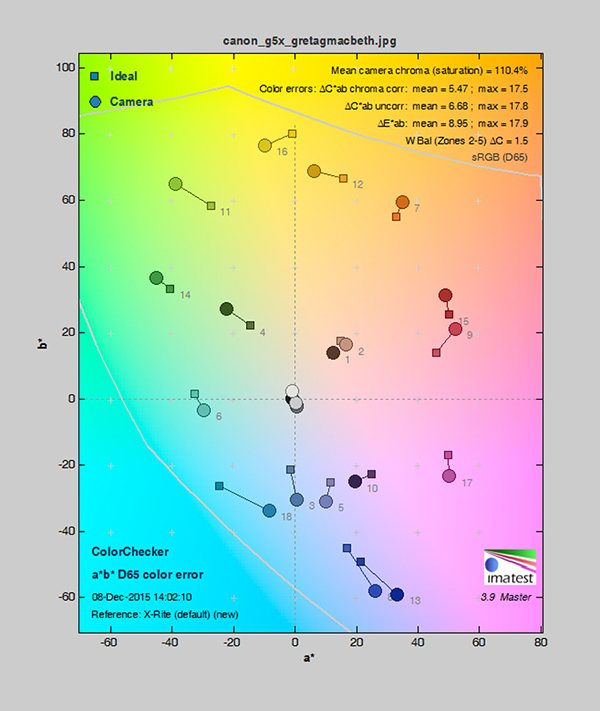
Comments on Video Quality
The results from the G5 X video resolution test are disappointing. The test chart was reproduced with 617 lines of 1080 lines per picture height. This is disappointing and creates softer video looks instead of the very sharp results in photo mode. Due to the very soft look the camera doesn't show moiré effects, which is the only advantage of the low-resolution results.
Color reproduction is fine: The test chart was reproduced with natural looking nuances and a slight shift of neutral gray test colors into the bluish area of the color space. In our live shoot, colors look natural, but the contrast setting is very high and therefore the recorded scene can at times look artificial.
The noise results are very good. It seems that the camera uses “pixel binning” for video recording in Full HD resolution (which is very low compared to the 20MP resolution of its still images). “Pixel binning” also enhances the light sensitivity and therefore the luminance noise factor is considerably lower. Color noise gets visible in videos taken with ISO 1600; in videos taken with ISO 3200 color noise is really annoying.

Pro:
+ high resolution EVF with very high frame rates (up to 120 f/s)
+ large sensor system for a compact camera (1-inch sensor class)
+ a lot of function elements for direct control of many parameters
+ high speed lens system with moderate zoom factor
+ handy setup dial on the front of the camera body
+ swivel monitor; fully articulated
Con:
- digital sharpness filtering very intense (may cause over sharpening effects)
The Canon PowerShot G5 X comes in black and retails for $799.99. More info here.
(Lab Review is where we publish web-exclusive lab reports on cameras. To read more Lab Reviews, click on the Reviews tab on the top navigation bar of this page. New photo gear reports are published frequently, so check Reviews for more equipment evaluations from Shutterbug writers.)








